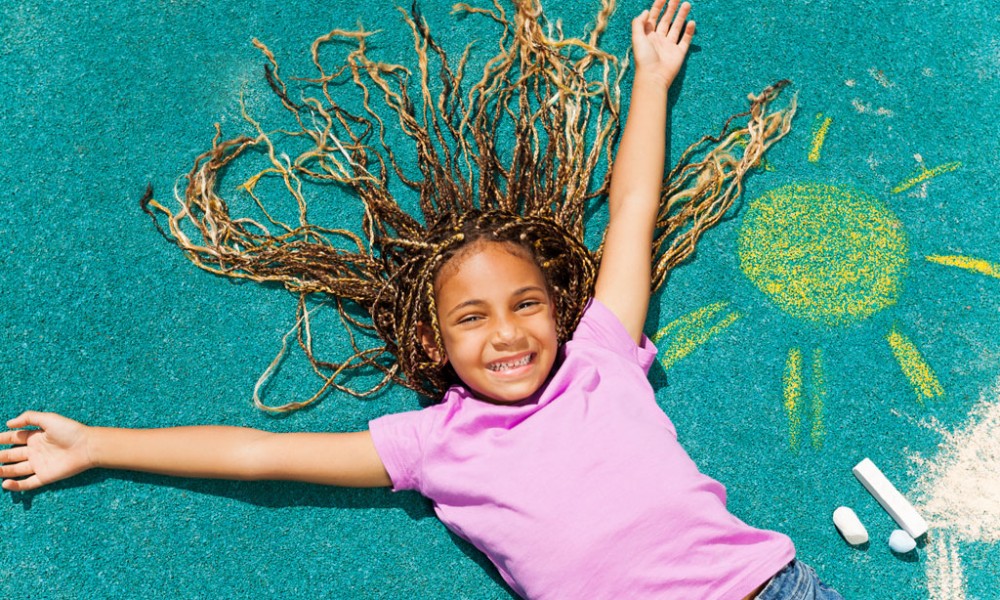Summer break is the ultimate holiday for kids everywhere, and it seems to never come soon enough. A symbol of freedom, summer is a chance for young students to fulfill their daydreams of sleeping in, staying up late and playing outside all day.
For the next three months, there won’t be any homework, teachers or tests, but that doesn’t mean that learning should stop over the summer. Keeping your child engaged in learning over the next few months is crucial to reinforce concepts they learned during the school year and to help prevent the “summer slide”—when students slide backward academically.
In fact, research has shown that students typically score lower on standardized tests at the end of summer vacation than they do on the same tests at the beginning of summer.
While summer can be a much-needed break for many young students, it is important to also plan for activities this summer that will keep learning alive. Fortunately, there are ways to boost academic achievement that are both active and fun—and the Arts are a great place to start!
A growing body of research shows a positive correlation between involvement in the arts and academic achievement. A report by the National Assembly of State Arts Agencies highlights several studies that show the arts actually support student achievement in a variety of areas, including reading and language, mathematics, critical thinking and motivation to learn. For instance, reading comprehension is boosted when drama is involved and performing dance helped improve creative thinking.
Furthermore, the report points to several studies that have shown increased years of enrollment in arts courses are positively correlated with higher SAT verbal and math scores.
For parents, the evidence is clear: study of the arts helps student achievement and summer break should be no exception. To help parents, here are some learning arts activities to keep students engaged all summer long:
Star in the living room theater: Ask children to act out some of their favorite storybooks. Taking the written word to the “stage” deepens reading comprehension, expands creativity and entertains the whole family. Write scripts, assign a director. Crafty kids can make costumes, programs and tickets!
Guess the titles of works of art: Visit a local museum or gallery with your child and observe works of art, but don’t look at the title. Let your child guess what he or she thinks the title should be based on his or her observation. Ask kids to explain what influenced their title. Once finished, you can reveal the real name and compare and contrast—a great way to boost reasoning skills!
Play with Story Cubes: Story cubes are great educational activity starters for writing stories, making plays, creating dances and crafting works of art. Roll the dice to reveal painted icons that inspire your artistic creations.
Dance your Name: Ask children to make up a dance using the letters of their name. They may trace the letters in the air with their hand, foot, elbow or other body part; or they may write the letter on a piece of paper and use the lines of the letter as a map to follow and inspire movement. Ask them to try different tempos and levels. The key to this activity is challenging kids to come up with a beginning, middle and end — just like writing!
Compose your own theme song: Reinforce abstract thinking skills by having the children write down five words that describe themselves. Think about what musical sound best represents each word. Does the characteristic “kind” equal a gentle happy sound? Does “powerful” equal strong sounds? String together your sounds and compose your very own theme song. Be sure to give it a title!
Make a masterpiece: Break out the paints, crayons, colored pencils and ruler. Show children works of art by the famed Piet Mondrian, such as “Composition with Yellow, Blue and Red,” and inspire them to make their own versions of his noted horizontal and vertical grid works. Ask kids to measure each of their lines and practice calculating area. Don’t feel limited, though; play with other colors and explore other geometrical shapes.
Move your math facts: A really fun way to reinforce math concepts is to dance them. Ask your child to solve an equation by dancing the answer. Each hop, skip or leap equals “one.” So for “two multiplied by two” a correct answer would be four hops or four leaps.
Keep Reading: No summer learning list is complete without reading. To keep with the arts theme, pick up biographies about great composers, artists, or dancers. Check out “Ballet for Martha” written by Jan Greenberg and Sandra Jordan about modern dancer and choreographer Martha Graham or author James Mayhew’s “Katie” series, as in “Katie Meets the Impressionists” and “Katie Meets the Mona Lisa.”




No comments